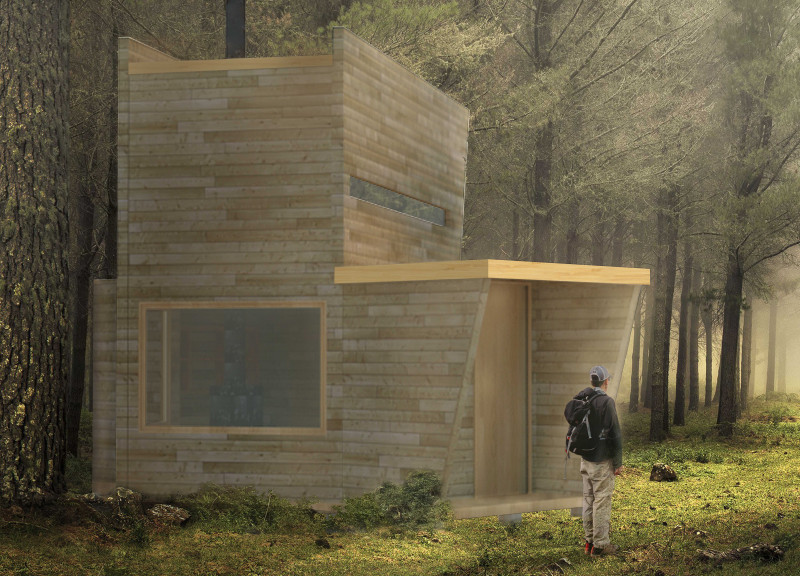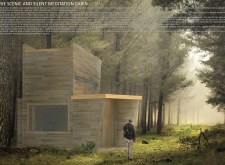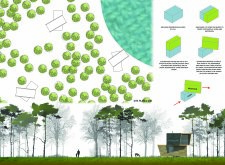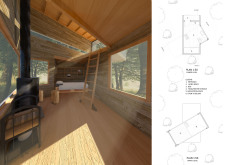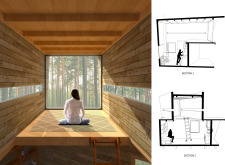5 key facts about this project
The Scenic and Silent Meditation Cabin offers a calm space designed for meditation and relaxation. Located in Latvia, a country celebrated for its rich natural landscapes, the cabin provides an ideal setting for those seeking solitude and a connection to the environment. The design focuses on dividing living and meditation areas, allowing for distinct experiences that promote tranquility and mindfulness away from modern distractions.
Site Orientation and Functionality
The cabin features a two-level layout that clearly separates the living space from the meditation area. The upper level is strategically oriented to face the forest, enhancing views and creating a peaceful atmosphere for reflection. Natural light floods the space through a large curtain wall, bringing the forest inside while maintaining a visual and physical connection to nature.
Spatial Design and Amenities
The open layout cultivates a sense of freedom, while also providing privacy. Essential amenities are available on the lower level for extended stays. A wood-burning stove ensures comfort in colder months. The design includes a full-size bed, storage shelves, and cabinets, making it a practical space for visitors. Every element contributes to a comfortable and enjoyable experience.
Sustainability and Material Choice
Sustainability is central to the cabin’s approach. The structure is made from recycled wood, which aligns with Latvia’s commitment to environmental responsibility. This choice not only reduces ecological impact but also complements the natural surroundings, reinforcing the idea of a harmonious relationship with the environment.
Structural Adaptability
The design allows for flexibility in positioning the cabin according to the site’s specific characteristics. By adapting the orientation of each structure, it provides varying views and sunlight exposure. Each cabin can cater to its location’s unique qualities, creating a personalized retreat experience for residents.
Attention to detail is evident in features like the narrow openings at sitting height in the meditation space. These openings let users enjoy unobstructed views of the forest while seated. This design element encourages mindfulness, drawing attention to the natural beauty outside and deepening the connection to the landscape.


